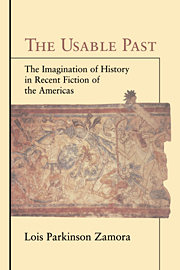4 - Synchronic Structures
Published online by Cambridge University Press: 01 September 2009
Summary
… creemos en la ficción del tiempo, en el presente, el pasado y el futuro, pero puede ser también que todo ocurre simultáneamente, como decían las tres hermanas Mora, que eran capaces de ver en el espacio los espíritus de todas las épocas.
Isabel Allende, La casa de los espíritus… we believe in the fiction of past, present, and future, but it may also be true that everything happens simultaneously – just as the Mora sisters said, who could see the spirits of all eras mingled in space.
Isabel Allende, The House of the SpiritsTHE SYNCHRONIC STRUCTURES that I discuss in this chapter and the fragmentary structures that I will discuss in the next one are related in their awareness of the multiple and often contradictory traditions they inherit, modify and pass along. In both chapters, I discuss writers who use historical and narrative fragments to challenge the progressive linearity of positivism and positivism's preeminent literary form, the novel. But their narrative strategies allow me to make distinctions among them. Whereas Mario Vargas Llosa and Julio Cortázar create structural and/or metaphoric wholes in which fragments may be endlessly included, Angelina Muñiz-Huberman and Sandra Cisneros resist that possibility, flaunting the fragments as such.
Information
- Type
- Chapter
- Information
- The Usable PastThe Imagination of History in Recent Fiction of the Americas, pp. 133 - 155Publisher: Cambridge University PressPrint publication year: 1997
